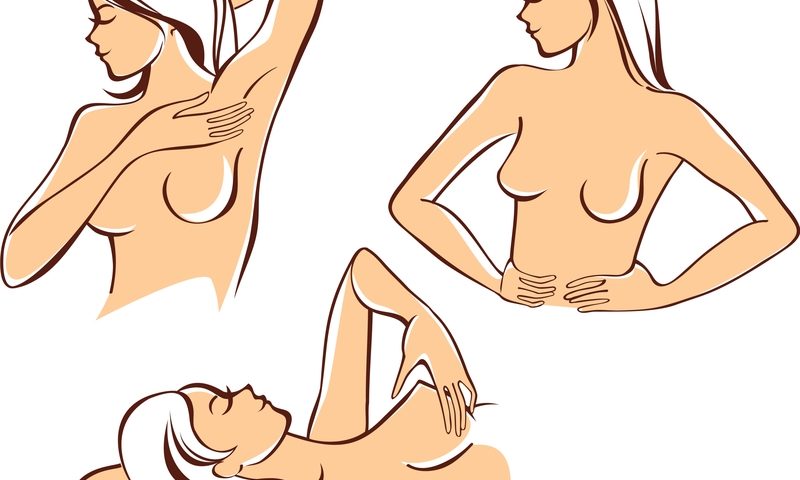As many women hear from their doctors and friends, and on television and radio, early detection of breast cancer is crucial. Breast self-exams have detected thousands of breast cancer cases early, empowering women to take more control of their physical health. Teenagers are now being prompted to do monthly breast self-exams to find anything that might be unusual.
But what if the method of doing the monthly self-exams is missing something crucial?
I recently read a very interesting article about a woman, Hayley Browning, who did self-exams regularly. She did her exam as instructed, standing up in the shower. Then she also did the exam lying down. Thankfully, she did lie down because she didn’t discover a lump until she was lying on her back. Now she is advocating to teach women to do self-exams lying down. Neither the standard monthly exams, nor the illustrated laminated card that is recommended to hang in your shower, teach you to lie down to do a breast self-exam.
When doctors examine you for breast cancer, they check you in a number of ways. During the examination, you sit up and lie down, so why not do this check at home? Luckily for Hayley Browning, she found the lump lying down and unfortunately it was cancer. Yet, fortunately, she caught the cancer in time so it could be treated. She said she could not feel the lump in any other position than when she laid down. Now she is trying to spread this awareness to as many people possible.
Getting to know your breasts will help you detect any changes or anything new. Women need to be aware of that lumps aren’t the only symptoms to look out for when doing an exam. Look at the appearance. Do they appear the same? Do you notice any swelling, red, flaky skin or dimples? Are they swollen or painful? Another important symptom to watch out for is discharge from the nipple. As disgusting as this might sound, looking out for this and telling your doctor may save your life.
If you notice a red rash, bruising around the breasts, orange color or swollen breast area, please do not wait to see a doctor. It could mean a breast infection or something called inflammatory breast cancer (IBC.) Inflammatory breast cancer is rare in that only one to five percent of breast cancer patients have it. But it’s an extremely serious and aggressive breast cancer that needs to be treated right away. There isn’t usually a lump that can be detected.
The most common advice for self-exams is to stand in the shower or in front of a mirror. Along with the normal self-exam, lie down flat. Check your breasts for lumps, unusual signs, drainage and color. Check your underarms and lymph nodes around the collar bone for swelling. If you do find something unusual, or a lump, call the doctor. Even if you think it is small and insignificant, get it checked anyway. You never know what might be going on underneath, and the quicker you can get treatment, the better off you most likely will be.
Note: Breast Cancer News is strictly a news and information website about the disease. It does not provide medical advice, diagnosis, or treatment. This content is not intended to be a substitute for professional medical advice, diagnosis, or treatment. Always seek the advice of your physician or other qualified health provider with any questions you may have regarding a medical condition. Never disregard professional medical advice or delay in seeking it because of something you have read on this website. The opinions expressed in this column are not those of Breast Cancer News, or its parent company, BioNews Services, and are intended to spark discussion about issues pertaining to breast cancer.


